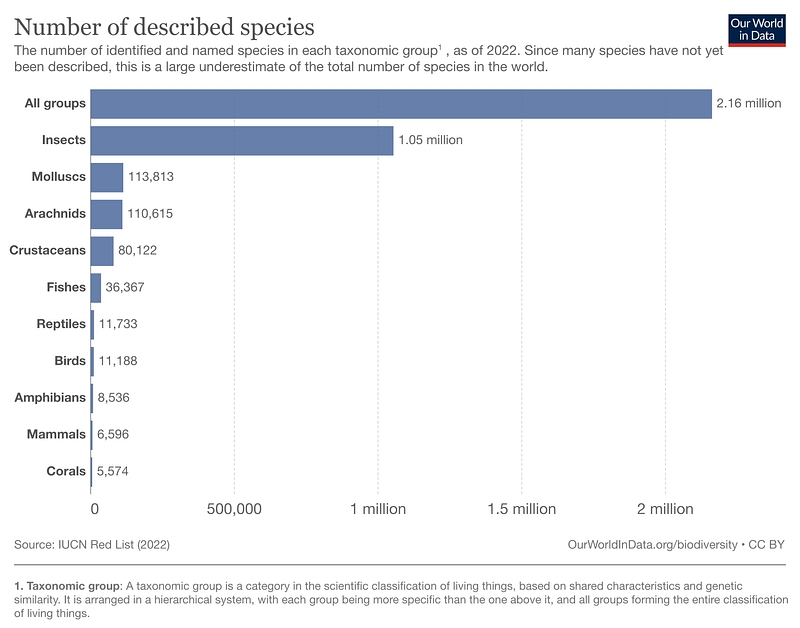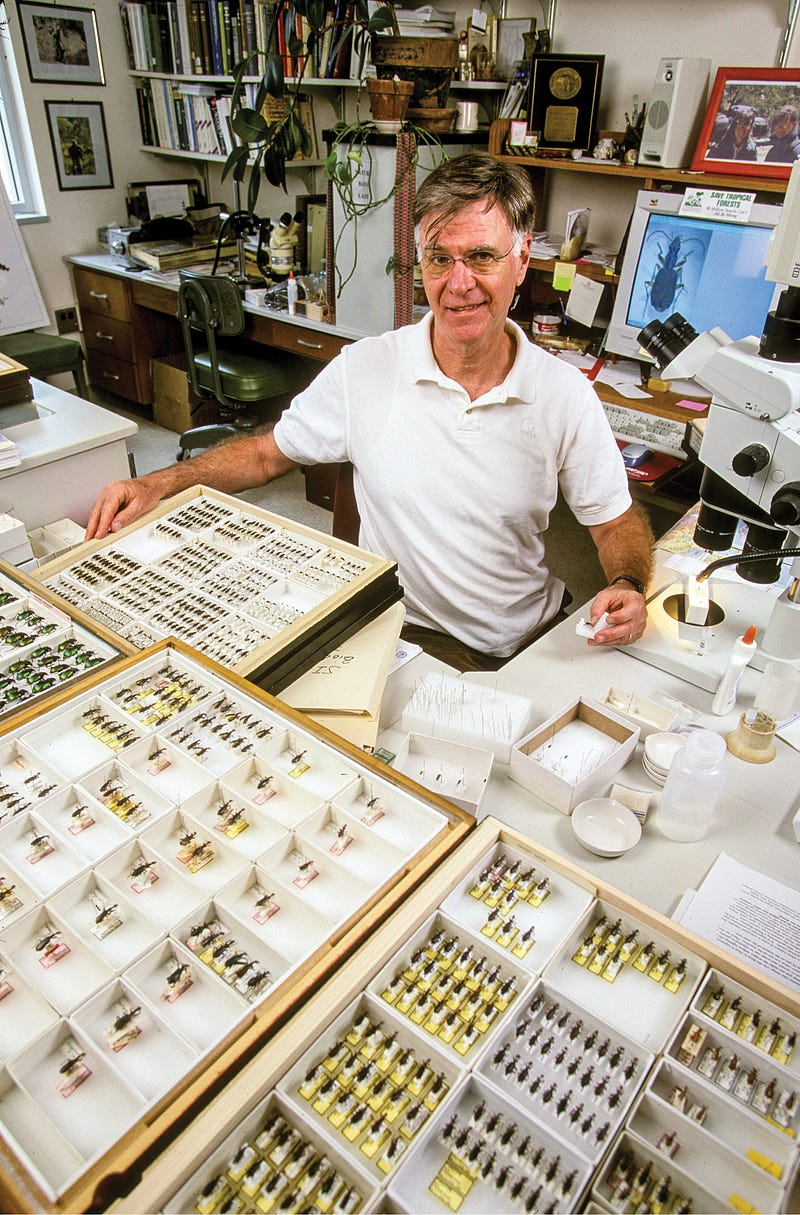Exploring Earth’s Biodiversity: Understanding Species Count
Written on
Chapter 1: Understanding Biodiversity
Earth is teeming with a vast array of life forms, showcasing incredible biodiversity. This concept can be examined globally or narrowed down to specific regions, ecosystems, or even individual trees. However, determining the precise number of species on our planet is far more complex than one might assume. In this article, we will explore the number of species currently documented, potential estimates for undiscovered species, and the significance of this information.
Section 1.1: Documented Species Count
Currently, scientists have identified around two million distinct species. This figure is astonishing and varies significantly across different groups. Notably, approximately half of these identified species are insects. Insects thrive due to their small size, rapid life cycles, and adaptability. Other groups with larger populations tend to consist of smaller organisms, which require fewer resources and reproduce more swiftly. An interactive chart from Our World In Data illustrates these statistics effectively.

Given the vast number of species, inaccuracies can occur in classification. Researchers sometimes mistakenly catalog the same species multiple times, inflating the total count. Recent studies suggest that this duplication could lead to an overestimation of described species by as much as 20%. Clearly, there is still much work to be done to establish a reliable classification system.
Section 1.2: Estimating Total Species Diversity
Despite our extensive research, it is evident that many species remain undiscovered. Each year, scientists identify numerous new organisms. Recent projections estimate that Earth may host around one trillion species. More conservative estimates suggest there could be approximately six million species, showcasing a remarkable disparity in projections. The methods used for these estimates are an ongoing area of investigation.
A pivotal yet controversial estimate was proposed by Terry Erwin in the 1980s.

Dr. Erwin, an entomologist, cataloged hundreds of new insect species and sought innovative methods to estimate global biodiversity. In a notable experiment, he applied pesticide to a tropical tree and counted the various insect species that fell. He extrapolated this data to estimate around 30 million species globally, a significant increase from the then-current estimate of one million. While scientists may not agree on the exact number, they acknowledge that his approach was groundbreaking.
Chapter 2: The Importance of Biodiversity
Understanding biodiversity is crucial for human survival. The intricate network of living organisms is vital for providing food, clean water, and breathable air. Diverse ecosystems are better equipped to withstand environmental changes and disruptions. Therefore, monitoring biodiversity and its fluctuations over time is essential. It is estimated that naturally, about 0.0001% of species go extinct every million years. However, human activities have accelerated this extinction rate by a factor of approximately 1000, though this figure carries some uncertainty.
Fortunately, numerous conservation organizations are dedicated to preserving the natural habitats that species depend on. These groups often acquire critical lands to maintain their wild state. Having accurate biodiversity estimates is essential for evaluating the effectiveness of various conservation strategies.
To delve deeper into species extinction and learn how you can contribute to conservation efforts, I recommend visiting this resource. It offers simple actions you can take if this issue resonates with you.
I hope this article has provided you with valuable insights! If you appreciate my work, consider becoming a Medium member through this link to support my writing. You can also follow my publication, Science Pathways, for more engaging stories. I publish weekly about mathematics and science.
The first video titled "How Many Species Are There?" presents an overview of species diversity and the challenges of counting them accurately.
The second video, also titled "How Many Species Are There?" further explores the implications of species counts and what they mean for conservation efforts.